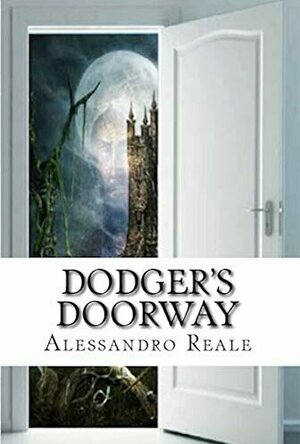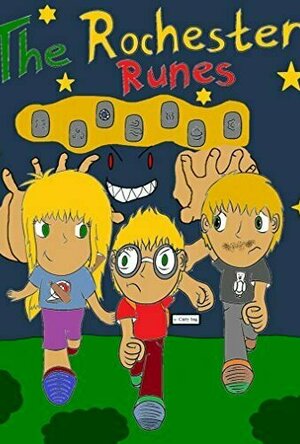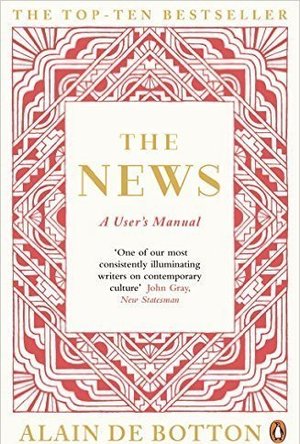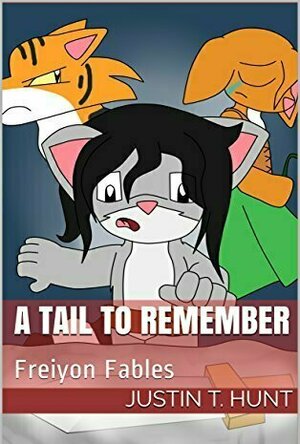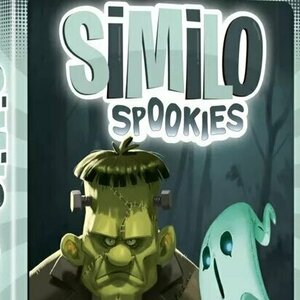EmersonRose (320 KP) rated Dodger's Doorrway in Books
Nov 20, 2019
Dodger’s Doorway is a fantastical adventure that makes for a super fun read. The melded fairytale worlds is a theme we have seen more and more of, which I love, and I think that Reale did a masterful job of combining the magical nostalgia of the characters we know and love as well as bringing in a unique twist and creating new life in this classic characters. I particularly liked the portrayal of Humpty Dumpty. I think that Humpty is a character that is often veered away from as being too hard or not interesting enough to expand upon, but Reale takes him and makes him into an exciting warrior, which I thought was very clever. Reale’s Storyworld combines the magical innocence and dark origins of the stories and characters he chooses which gives the story a real sense of danger and epic adventure that makes the book a quick and thrilling read. Reale took inspirational from a wide range of stories; from Hansel and Gretel, Jack and the Beanstalk, Pinocchio, Peter Pan, Alice in Wonderland, The Wizard of Oz, and many more. I loved the variety and enjoyed seeing Reale’s spin on the characters.
The book itself is well-written, and the arc works well to make for a book that is hard to put down. Dodger is a great character in that he has a lot of growth throughout the book and creates real feeling relationships with the fairytale characters he meets. I liked that Reale brought the book to a young adult read instead of a children’s book by playing with the dark sides of fairytales, as well as making Dodger a teenager dealing with very real young adult issues.
Dodger’s Doorway is an enchanting story with a lot of heart. I very much enjoyed reading it. If you are a fan of fantasy stories, particularly tales where characters find magical worlds, a personal childhood dream of mine and many others I am sure, then I would highly recommend giving this book a read!
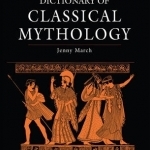
Dictionary of Classical Mythology
Book
Jenny March's acclaimed Dictionary of Classical Mythology, first published in 1998 but long out of...
Night Reader Reviews (683 KP) rated The Rochester Runes in Books
Jan 9, 2020
Unlike the first book that detailed a lightning-tailed squirrel's journey through Freiyon this story follows the three human Rochester siblings. The three siblings., Robert, Charles, and Sarah move with their mother into their grandparents old manor. None of the children are exactly thrilled about the move and are surprised to find the manor to have traps in it. After finding a mysterious stone that unlocks a door at the end of a secret passage the children find themselves in Freiyon.
It is in this world of talking animals and sentient trees that they search for the rune stones that will lift their familys curse. The rune stones, once gathered together also have the ability to grant wishes. The Rochester siblings. use these wishes to aid them in protecting Freiyon from The Grabbers, who are also in search of the rune stones. This is an adventure that will bring their entire family together, but it may also tear some of them apart.
What I liked best was Freiyon still feeling a lot like Narnia. Then there is also the fact that this book is tied very nicely in with the first one. Some of the human characters even made me question if they are in any way related to the unnamed boy at the end of the first book, but that is just speculation on my part. What I did not like is just like the first book the writing felt oversimplified. At times it did seem like maybe this was on purpose with the goal of preventing the book from being too long. If that is the case than the book suffers from it. The ending also felt very confusing and as if it was unnecessary for things to turn out the way the did, but I dont want to give any major spoilers.
Once again I would suggest that middle school-aged children and some elementary students can visit the would of Freiyon. The violence that made me question how some parents of younger children might perceive this series even appeared to be a little less graphic this time around. I rate this book a 2 out of 4 just like the first. Once again the book seems to jump from one major sequence of events to another with only minimal transitioning. Still, the world itself is intriguing if only it was given a better description. The ending of this one also made it lose major points.
https://nightreaderreviews.blogspot.com/

comiXology - Comics & Manga
Book, Comics and Entertainment
App
Are you ready to explore over 100,000 digital comics, graphic novels and manga from Marvel, DC,...
BookblogbyCari (345 KP) rated The News: A User's Manual in Books
Aug 5, 2018
Despite having the title “The News: A User’s Manual”, the book reads like a wish-list of how de Botton wants news journalists and media editors to present and publish the news. Furthermore, if it was intended to be read by the layperson, de Botton must have had the dual intention of increasing the lay reader’s vocabulary. Several of the words I looked up in my offline dictionary app weren’t to be found.
I liked how his views were presented though - this short book is split into 8 main topics: politics, world news, economics, celebrity, disaster, consumption and a conclusion. Each topic is split into further sub-topics, and each of the points being made in these sub-topics is numbered and lasts about a page. This organization doesn’t disrupt the fluidity, however, and the way that points are made in such small sections provides the perfect opportunity to pause and reflect on each point made.
It presents the author’s views on what the news should ideally be and how it can enrich us. He made numerous valid points, but for the purposes of this review, I will concentrate on those I consider to be the most important. The book is written for a British audience, using several British news story excerpts to highlight de Botton’s points. His points are all well put and I didn’t really want to have to paraphrase them for this review for that very reason.
Firstly, the perception that political news is boring is not a minor issue. Often there is an important matter which fails to engage us, and we can react more strongly to matters which affect very few people.
Another valid point is how the process of the reader developing views on serious issues on which so little information is actually conveyed, makes us feel like we are being ruled by crooks and idiots who seem to be ignoring logical solutions. The news fails to explain why difficult decisions are so difficult.
On celebrity news, de Botton portrays hero worship as childish and demeaning, a sign that we find ourselves inadequate. He argues that celebrity news should be used as a self-improvement tool, focusing on what we can learn from the individual.
De Botton believes that the purpose of dramatic tragedies should be so we can compare ourselves to the villain, that the stories read like fables and imparted a moral statement. We are a hideously flawed species, he says, and the criminals need to be humanized if we are to learn anything from these kinds of stories.
And on that note, I shall say I have learned something from this book. The contrast de Botton demonstrates between how the news is portrayed and how it ought to be to best enrich us, will ensure I will take his comments into consideration when I read/watch the news or am deciding on my personalization of news received on news apps. The purpose of the editors may be to sell advertising space, but my intention in perceiving the news is to obtain a fair and accurate perspective of the world around me.

Speakaboos - The Reading and Learning App for Kids
Education and Book
App
The only reading app designed to motivate kids to read! ** Over 200 interactive stories & songs that...

KidloLand: Kids Nursery Rhymes
Education and Games
App
KidloLand is an award-winning app for kids (1-5 yrs) with 1000+ nursery rhymes, songs, games and...
Night Reader Reviews (683 KP) rated Freiyon Fables: A Tail to Remember in Books
Jan 9, 2020
In A Tail to Remember a squirrel by the name of Micklang escapes from a zoo and in the process is electrocuted, giving his tail a lightning-bolt shape. He then falls into another world in an Alice in Wonderland – down the rabbit hole style. In this new world, Micklang receives dreams about his warrior-self telling hi how to become that version of himself. During his journey, Micklang makes some surprising new friends and is reunited with some he has met before in the human world. It is with these friends that Micklang travels this new world, mapping it out.
At one point Micklang comes across an island where his traveling companions are captured and must rescue them before their captors harm them. Then after abandoning ship in a bad storm Micklang finds himself on yet another island, but this one is home to only other lightning-tail animals. Towards the end, Micklang goes back to one of the first islands that he visited in this new world, now called Freiyon. It is there that Micklang and his friends fight in the first battle in a war between The Grabbers and King Karel. It is during this battle that Micklang’s story ends but it is not the end of the stories about Freiyon. This is because a little human boy is told about Freiyon by his mother and decides it is time for him to visit this land of talking animals.
What I liked best about this book is that it is a rare occasion when I can honestly say that the ending, specifically the Epilogue is my favorite part. The epilogue tied the entire story together with the prologue when frankly I originally was confused about how it all connected. This actually redeemed the entire book in some ways. What I did not like was that the talking animals and being in a different world or realm gave the book a Chronicles of Narnia feel. Normally that would be a good thing but in this case, the writing style felt simplified and rushed at the same time. Also, this book felt like it was intended for children up until book three. In Book Three: The Switch Between Stories the phrases “What the HELL” and “how the HELL” were both used and that doesn't feel kid-friendly.
It was hard for me to pick a target audience for this book. My best guess would be for early middle school students and late elementary students, age-wise anyway. This is because the length might make it difficult for some elementary students (and some parents may not be thrilled about all the violence, who knows). Yet the simplified writing style may (or may not) appeal to older readers. Most likely it would be dry and boring for anyone out of middle school. That being said I rate this book a 2 out of 4. This is because this story falls in that dangerous zone between being simple enough for young readers and having just enough detail to feel rushed. The action moves from one major event to another without much of a break in between yet the story is still interesting
https://www.facebook.com/nightreaderreviews
Purple Phoenix Games (2266 KP) rated Similo: Spookies in Tabletop Games
Mar 11, 2022
Similo: Spookies (which I will just call Similo from here on out, as they are all basically the same, but with different themes) is a party card game where one player knows information and attempts to persuade the other players to choose the correct character SILENTLY. One game lasts five rounds or less, and many times players will want to play multiple games in a row.
To setup, shuffle the deck of cards and place it face-down on the table. The player chosen to be the “Clue Giver” will then secretly look at the top card. This card will be the secret character for the entire game. Along with this card, the Clue Giver will draw an additional 11 cards and shuffle them. Next, lay out the 12 characters face-up in a 4×3 grid, so that all players can see. Finally, the Clue Giver draws another five cards to act as their starting hand of clues. The game may now begin in earnest!
The game lasts no more than five rounds, and each round is played mostly the same. During the first round the Clue Giver will place a card from their hand onto the table in either Portrait or Landscape mode (I know there are different words to describe these orientations, but they are failing me now). When a card is in Portrait mode, the Clue Giver is letting the players know that the secret character has similarities to the played card. Landscape placement means that the secret character has differences from the card played.
At the end of the first round, the other players must discuss and decide one card from the grid to remove from play, based on the Clue Giver’s information. If the card removed is the secret character (or at any time the secret character is removed in this way) the players all immediately lose the game. However, if the players have removed an appropriate character card, then the game moves to the second round. Each subsequent round is played exactly the same way, except the number of cards removed will match the round number being played. For example, during the third round three cards will be removed. The only exception here is the very last fifth round. During this round there will only be two cards remaining, and the players will need to choose the correct one to win the game. Win or lose, all players will most likely request to play another game with a different Clue Giver.
Components. This game is 30 cards in a tuckbox. The cards are all great quality with excellent linen finish. They each have the character’s name on the upper left corner and a small thematic quip on the lower right corner. The big thing here is the utterly amazing character art by Naiade (Seasons, Tokaido, Isla Dorada, etc). They are each so wonderfully illustrated, and they have to be, considering the entire game is based on the similarity or differences of each card. I was so very pleasantly surprised to see this beautiful set of cards pop out of the box when I opened it. Zero issues with components here.
This game is low-key a thinking person’s puzzle. How can I get the group to exclude one card specifically and throw away all the others? What the heck is this Clue Giver trying to tell us? What exactly is an Oni? With the right group of gamers, especially those that share many inside jokes and experiences, this could be a nightly hit. Now, determining the difference between Frankenstein’s Monster and a Zombie may be harder than you thought, so do be careful with those technicalities.
This one really reminds me of a much more compact version of Deception: Murder in Hong Kong. There is a silent Clue Giver in both trying to guide the other players to the right answer using cards. If I can get the same feeling from a game featuring 30 cards versus about 300 I might have a replacement situation on my hands here.
For its tiny table presence, excellent artwork, and overall game play, Purple Phoenix Games gives this one a bone-chilling 4 / 6. I know at this very second that my score is hanging in the balance. I want it to be a 5 so very badly, and I feel that it may actually get there, assuming I can play with larger groups of people and a variety of types of gamers. For now, I am happy with the 4 it is assigned. If you are like me and didn’t know you needed a smaller game in your collection that can give similo experiences to bigger boxes, give this one a shot.
Oh PS – You can also combine the different sets into a larger and more chaotic game. I’m not sure I have the huevos for that quite yet, but I think a good counterpart to this Halloween-themed set may be the Fables or Myths sets. Let me know if you have combined these two and if my hunch is correct. I’m going to go fanboy over Naiade’s art now.
